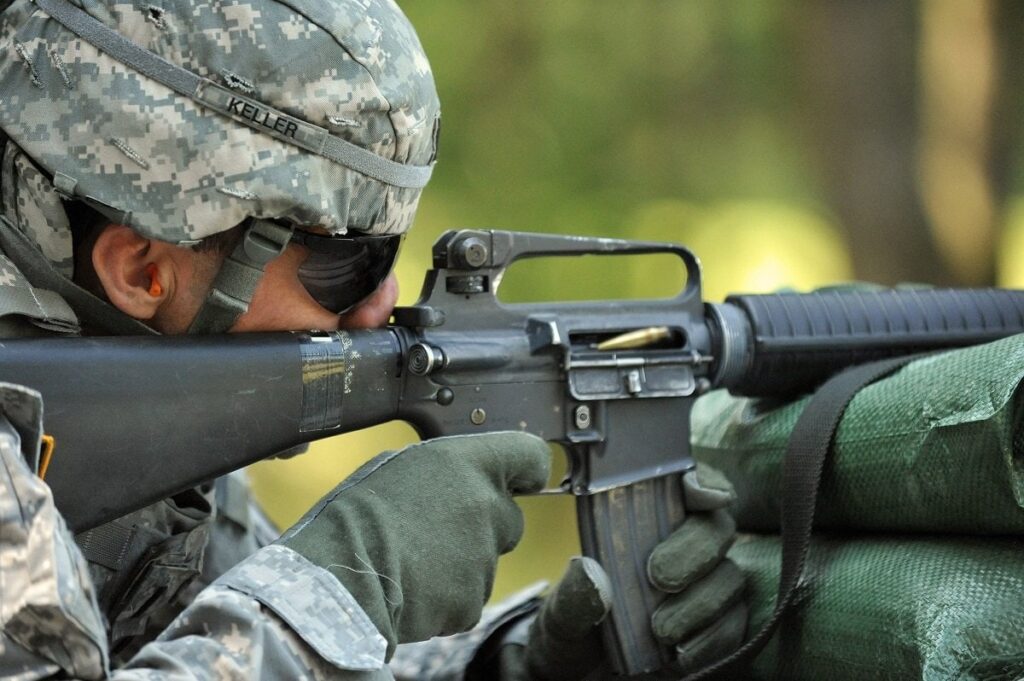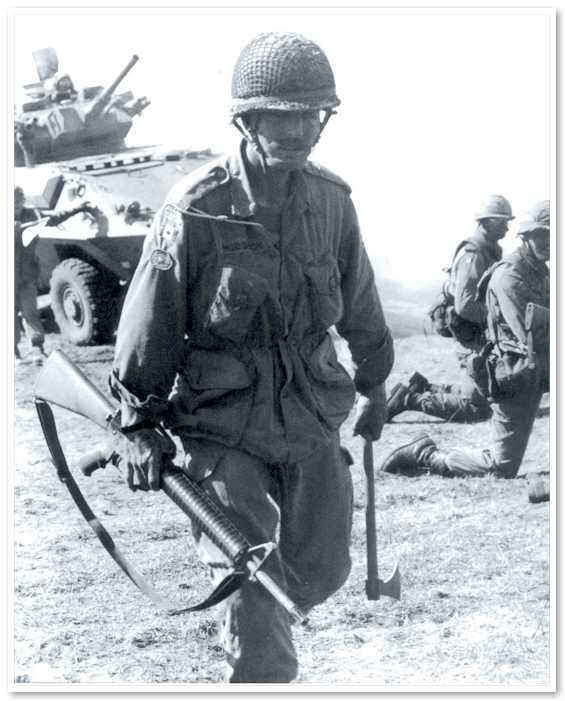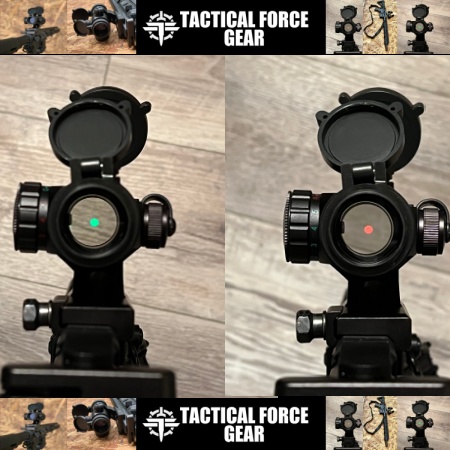The USMC’s greatest shame was the M16A2. The M16A2 project was largely led by Marines, but sadly, it was led by Marines more obsessed with scores on the Known Distance range than combat effectiveness. Some of the problems with the ole A2 would stick around on the A4 and were ultimately a silly decision.
Problems With the M16A2
Where to start? The saddest problem was the government profile barrel, which was heavy in the wrong spots and made the rifle unwieldy. This was done because, apparently, Marines were bending barrels, but in reality, the armorer’s gauge showed the barrels were bent due to a buildup of bullet jacket material on the gas port. This was discovered too late, and we got the dumbest barrel design possible.
The stock was ridiculously long, too. The A1 length was perfection, and the reason they decided to lengthen it was silly. The longer length of pull is great for sling loop shooting for score at Camp Perry, but not so great for infantry use with gear.

The M16A2 sights were also great for Camp Perry shooting, but an infantry rifle’s rear sight is needlessly complicated. The A1 sights were a superior option in most ways. The M16A2 aperture sizes were admittedly better, but that would be an easy fix.
Oh, yeah, and they decided a three-shot burst was the way to get Joe to conserve ammo instead of spray and pray. Three-shot burst designs are kind of silly to begin with, and they were executed in a silly way with the M16. This led to a complicated trigger design that was also terrible.
Most of the M16A2’s improvements weren’t all that great. Somehow, Canada did it way better than we did with the C7 series.
How the C7 Became the Better M16A2
Before the C7, the Canadians used the FN FAL like most of the Commonwealth. When they wanted to move from a battle rifle to an assault rifle, they could have grabbed the SA-80 family, like the Brits, but thankfully, they weren’t stupid.
Instead, they looked to the south, saw the M16, and said, “Hey, that works pretty well.” Years prior, they even had a liaison officer working with the Marine Corps on the A1 upgrade package. They ran a series of tests with various firearms and settled on the FN FNC and M16A2, with the A2 winning.

Colt issued Canada a license to build the rifle, and Canada turned to Diemaco. Canada wasn’t psyched about the M16A2, so they made a few changes. Adding a little maple syrup to the design turned the M16A2 into the C7.
How Canada Made an Excellent M16
First, they kept the length of pull from the M16A1 but created a method of spacers that allowed the stock to adjust its length of pull to fit the end user. Four spacers could bring the rifle to M16A2 length. Being able to adjust the stock became a running theme with the C7, and later models would use a four-position carbine stock.
Canada also kept the M16A1-style sights. The rear sight was adjustable for windage only, and the front sight controlled elevation. These simpler, more robust sights were less likely to shift when bumped against gear and ultimately easier to learn and use.

Canada also felt that its soldiers should fire short, controlled bursts in automatic fire. However, it believed they should train their soldiers. Thus, it ditched the three-round burst concept in favor of safe, semi, and auto, which results in a much nicer trigger overall.
Finally, they also used reinforced, interlocking handguards made of a more fibrous material. M16A2 handguards had a habit of falling off with wear. The more fibrous material was used to create a better cold-weather-resistant handguard, which was certainly more important to our friends in the Arctic.
They even used a cold hammer-forged barrel to squeeze more accuracy out of their rifles.

An Initial Weakness
Not everything was perfect. Canada did try to jump into the world of polymer magazines early. The Thermold designs they used were, uhm, crappy. You can probably still find Thermold magazines from the era. The polymer is weak, the words anti-tilt were a foreign concept, and they just sucked.
Canada and The AR Platform
Canada was surprisingly progressive with its service rifle. It quickly introduced an optics rail, but it was Weaver because it predated Picatinny. It then introduced an ELCAN fixed power optic, followed by ambidextrous controls. Eventually, it added a four-position carbine stock to the C7 series to better fit soldiers. Sadly, we aren’t getting C7s anytime soon.
It would be an interesting route for a retro AR company to take. Brownells, H&R, or a similar company could make an interesting C7 concept.
Read the full article here











